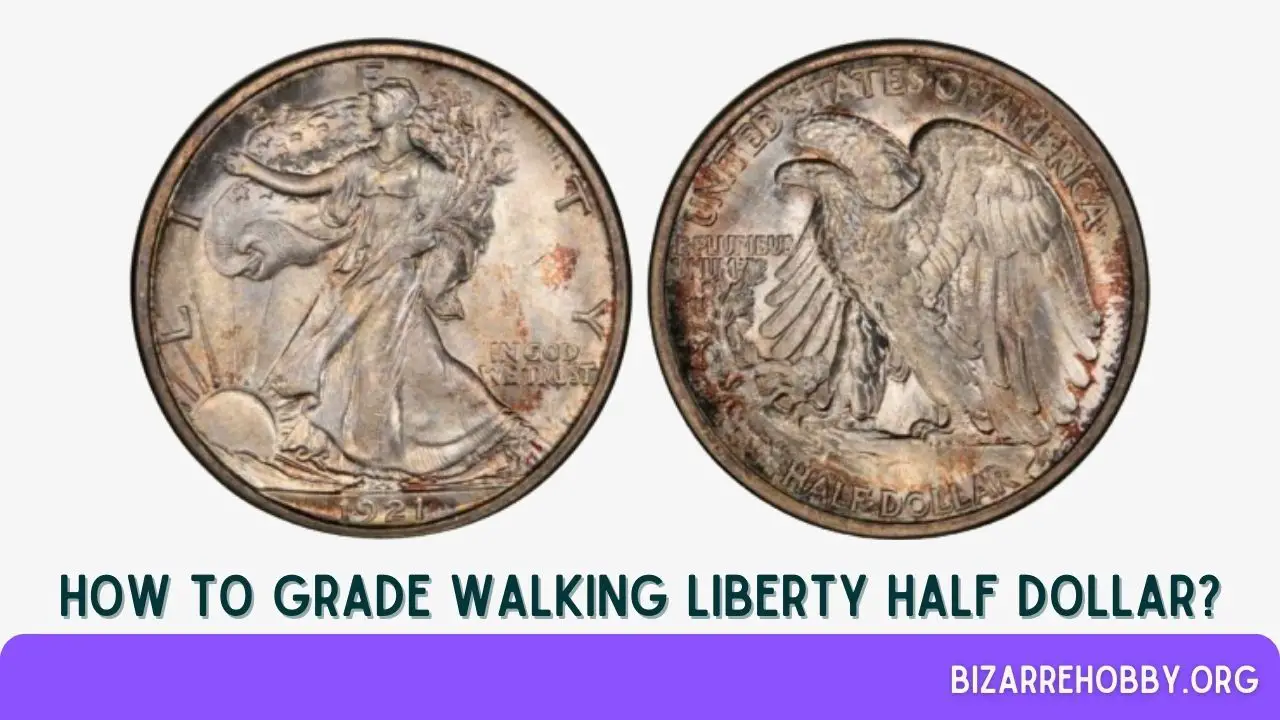Grading Walking Liberty Half Dollars involves specific guidelines, though it’s important to note that these rules apply to most coins but not all. The challenge lies in the intricate design, which made these coins difficult to strike perfectly.
For example, many coins minted in the 1920s appear worn even if they retain their mint luster. Similarly, regular issues from San Francisco and proofs from 1936 to 1942 often lack complete details. Therefore, careful evaluation is crucial when grading your Walking Liberty Half Dollar.
Table of Contents
- Grading Standards For Walking Liberty Half Dollar
- Understanding Grades for Walking Liberty Half Dollar
- Details of Walking Liberty Half Dollar
- How to Grade Walking Liberty Half Dollar?
- 1. About Good (AG 3)
- Obverse
- Reverse
- 2. Good (G 4)
- Obverse
- Reverse
- 3. Very Good (VG 10, VG 8, And VG)
- Obverse
- Reverse
- 4. Fine (F, F 12, And F 15)
- Obverse
- Reverse
- 5. Very Fine (VF, VF 20/VF 25, and VF 30/VF 35)
- Obverse
- Reverse
- 6. Extra Fine (EF 45 And EF 40)
- Obverse
- Reverse
- 7. About Uncirculated (AU 58, AU 55, And AU 50)
- Obverse
- Reverse
- 8. Mint State (from MS 60 to MS 70)
- Obverse and Reverse
- Final Thoughts
Grading Standards For Walking Liberty Half Dollar

Professional coin appraisal is the most accurate way to determine the grade of your coin and achieve the highest auction bids. However, many collectors prefer to estimate the grade themselves before seeking professional services.
This preliminary grading helps manage expectations and identify coins that may not be worth the cost of professional evaluation. Additionally, many modern coins are plentiful in the market, which can keep their prices low even in higher grades.
The modified Sheldon scale is widely used for this purpose. Both the American Numismatic Association (ANA) and most grading companies rely on this scale, making it a trusted method for evaluating American coins.
| Sheldon Scale | Grade |
|---|---|
| 1 | Basal State-1 |
| 2 | Fair |
| 3 | Very Fair |
| 4, 5, 6 | Good |
| 7, 8, 10 | Very Good |
| 12, 15 | Fine |
| 20, 30 | Very Fine |
| 40 | Extremely Fine |
| 50 | About Uncirculated |
| 60 | Mint State |
| 65 | Mint State |
| 70 | Mint State |
While it may be challenging for novice collectors to grade coins with high precision, the Sheldon scale provides a useful framework for estimating the quality and value of your Walking Liberty Half Dollar.
Understanding Grades for Walking Liberty Half Dollar
The Walking Liberty Half Dollar was minted from 1916 until the end of World War II, with the final set issued in 1947. These coins are celebrated for their beauty and elegance, making them highly collectible and appreciated in American numismatics.
However, the intricate design made these coins difficult to strike, often resulting in incomplete details. Even multiple adjustments to the obverse master hub couldn’t fully resolve this issue, complicating the grading process.
Coins from the 1920s often appear worn despite being in excellent condition with full luster. This issue also affected coins minted in San Francisco during the 1930s and 1940s. Therefore, it’s essential to follow specific guidelines when grading these coins, in addition to the standard grading criteria.
By understanding these nuances and using the modified Sheldon scale, you can more accurately estimate the grade and value of your Walking Liberty Half Dollar, ensuring you make informed decisions whether you’re buying, selling, or simply adding to your collection.
Details of Walking Liberty Half Dollar
| Specification | Detail |
|---|---|
| Face value | $0.50 (fifty cents) |
| Compound | Silver |
| Coin weight | 12.50 g (0.4019 troy ounces) |
| Coin thickness | 1.80 mm (0,0709 inches) |
| Coin diameter | 30.63 mm (1.2059 inches) |
How to Grade Walking Liberty Half Dollar?
When determining the grade of your Walking Liberty Half Dollar, it’s essential to adhere to the ANA’s guidelines and place the coin accurately on the 70-point Sheldon scale. This method ensures a precise valuation.
1. About Good (AG 3)

Coins in this grade are generally not sought after by collectors due to their heavily worn condition. They lack discernible details, have dull surfaces, and show no mint luster.
Obverse
- Lady Liberty appears as a mere outline with no visible folds in her dress.
- Olive branches are indistinct, lacking any separate leaves.
- Inscriptions are flat, partially visible, and blend into the coin’s edge.
- The date remains fully distinct.
Reverse
- The central eagle is flat with no separated feathers.
- The overall composition is aligned but lacks facial features.
- Letters in the inscriptions are visible but partially leveled with the surface.
2. Good (G 4)
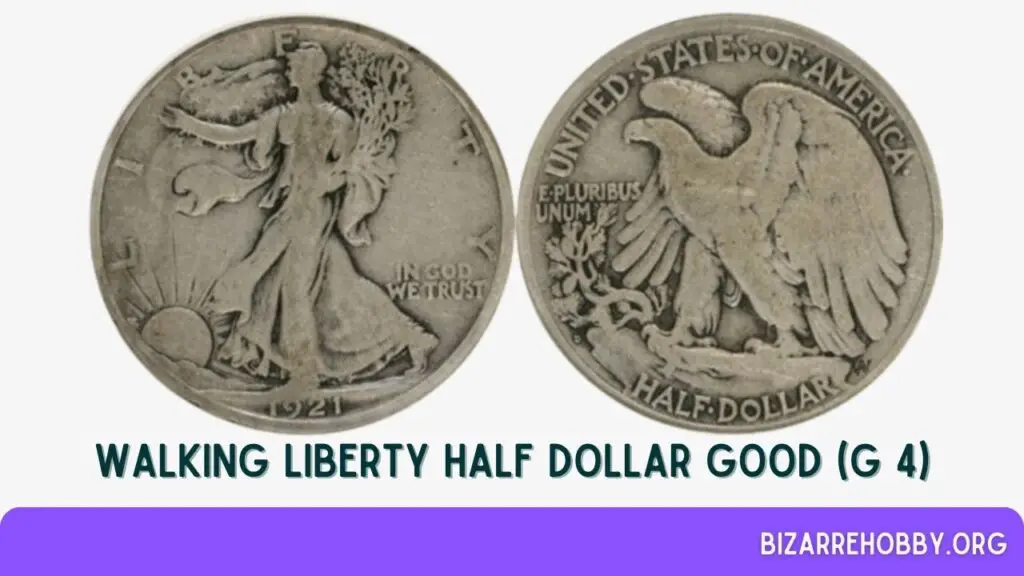
Despite being heavily worn, coins in this grade are still collectible. All legends are readable but somewhat flattened and pale. The date and denomination are in better condition, and the rim is mostly complete with minor wear in some spots.
Obverse
- The olive branch nearly merges with Lady Liberty’s left hand.
- Flag lines are partially missing in some areas of the design.
Reverse
- The eagle is outlined but has a flat, weakly visible head.
- The left wing and both legs lack recognizable feather details.
- The motto, denomination, and full state name are slightly worn but legible.
3. Very Good (VG 10, VG 8, And VG)

Coins in this grade have fully separated rims and readable inscriptions. Although the overall design remains flattened and weak, some details are still identifiable.
Obverse
- Lady Liberty’s body is mostly smooth with partially visible details in her dress.
- For coins minted after 1921, at least half the stripes must be visible.
- All lettering and the date are clear, though the top of the motto may be slightly smudged and weak.
Reverse
- At least one-third of the wing feathers must be visible.
- The large lower wing feathers and those in the tail are well-separated.
- The eagle’s features are discernible.
4. Fine (F, F 12, And F 15)

These moderately worn coins are appreciated by some collectors for their affordability and sufficient detail. This is especially true for early sets, as high-grade pieces from the 1920s are rare and expensive.
Obverse
- Recognizable fine details, particularly on Liberty’s skirt and sandals.
- Coins minted before 1921 may lack more pronounced details.
- The right leg is slightly worn, while the left leg and extended arm are nearly flat.
Reverse
- The eagle’s breasts are flattened, but about half the right-wing feathers have recognizable details.
- Two feather layers are visible in the left wing.
- The coin rim is complete, and all inscriptions are well-preserved.
5. Very Fine (VF, VF 20/VF 25, and VF 30/VF 35)
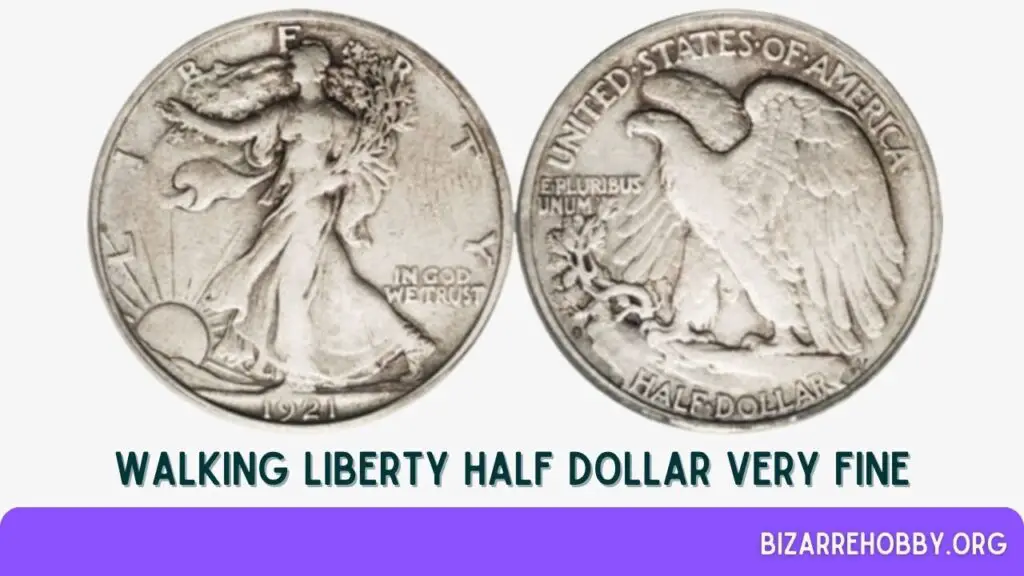
Most numismatists are satisfied with coins in this grade due to their sufficient detail. However, the highest points are still flattened and worn.
Obverse
- Lady Liberty’s skirt lines and leg areas are moderately sharp but can be weak on coins minted before 1921.
- Wear is present on her right arm, head, breasts, and left leg parts.
Reverse
- The eagle is better defined than in lower grades but still lightly worn.
- Most major details are recognizable, though high points are smooth.
- The pine tree branch shows more clearly visible details.
6. Extra Fine (EF 45 And EF 40)
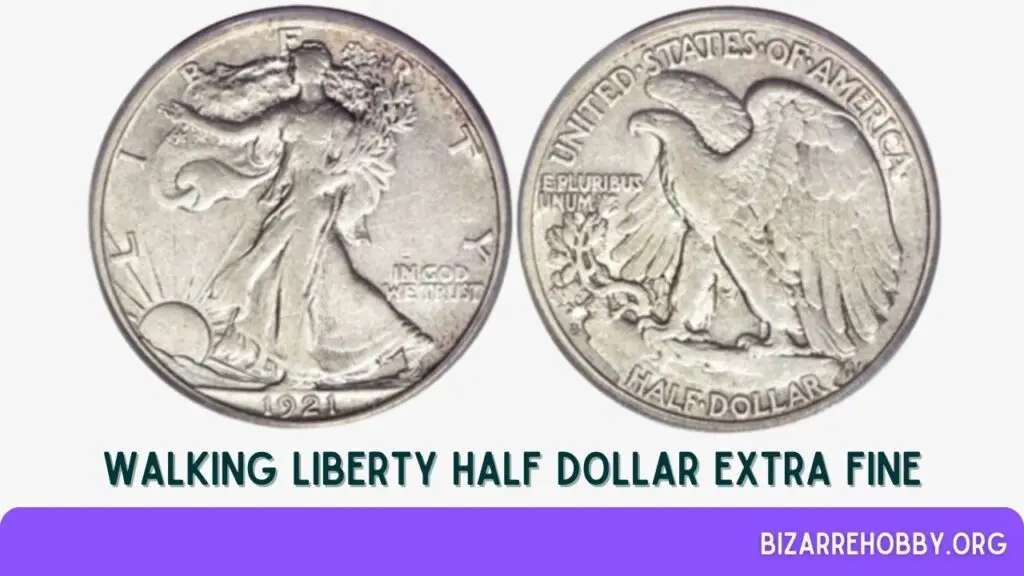
Coins in this grade often retain traces of original mint luster, with Liberty’s hair noticeably separated from her forehead. These pieces are desirable collectibles, especially from early sets.
Obverse
- The top of Liberty’s head is slightly flattened, but the line between her hair and forehead is distinct.
- Skirt pleats are bold and visible, and the branches in her arm are well-formed.
- Loss of crucial detail is minimal.
Reverse
- The eagle appears powerful with complete and distinct feathers.
- Slight wear is visible on a few leg feathers.
- High design points are smooth, but traces of mint luster are noticeable in deep and protected areas.
7. About Uncirculated (AU 58, AU 55, And AU 50)
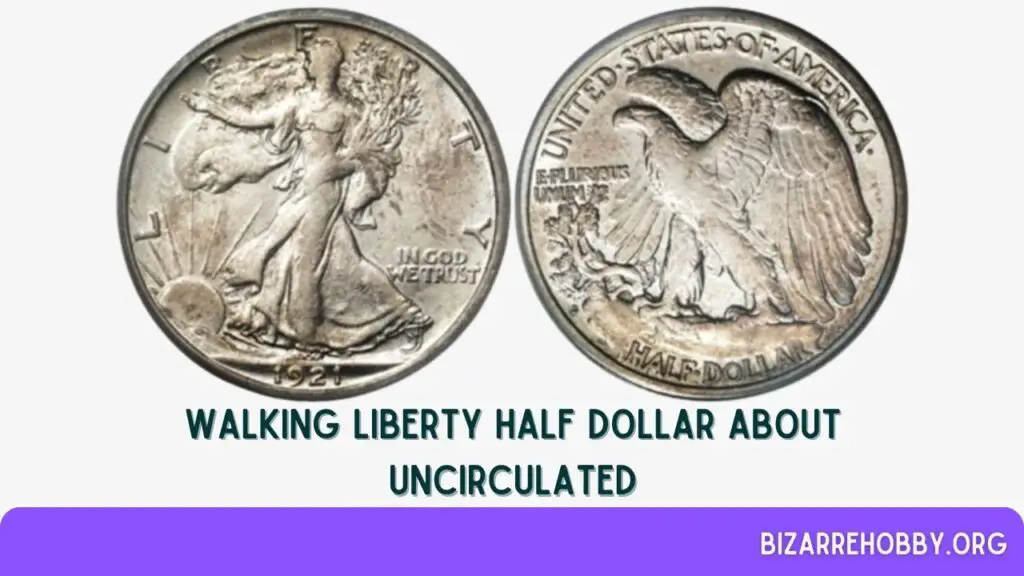
These coins are elegant and attractive, with only negligible traces of wear. They spent a relatively short time in circulation, retaining most of their original luster.
Obverse
- Signs of wear are subtle on Liberty’s head, breasts, and knee, mainly on the high points.
- These coins are shiny, stylish, and appealing to collectors.
- Since mint state pieces are rare, collectors often seek half-dollars in this condition to complete their collections.
Reverse
- The design is almost perfectly preserved, with slight flattening on the eagle’s head, left leg, and claws.
- Depending on the sub-rank, you can see approximately 1/2 to 3/4 mint luster on this side.
8. Mint State (from MS 60 to MS 70)
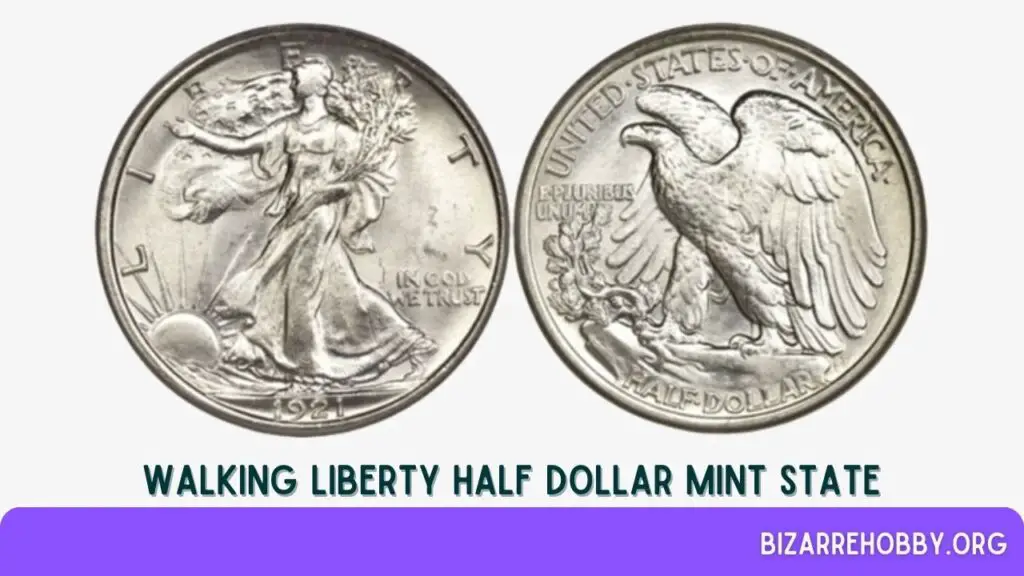
Uncirculated Walking Liberty Half Dollars were never used for trade, retaining their shine and original luster. However, they may have scratches from contact with other coins in the same bag.
Obverse and Reverse
- These coins are free from wear but may have bag marks from contact with the bag canvas.
- Experts classify coins into eleven subgroups based on the level of these traces.
Final Thoughts
Grading Walking Liberty Half Dollars can be challenging due to their intricate design and issues with metal flow into the dies. It’s often wise to send your coin to a reputable grading company for precise evaluation.
If you choose to grade the coin yourself, pay close attention to areas susceptible to contact marks, as these significantly impact the grade. Additionally, initial unattractive toning can pose challenges for appraisers.
